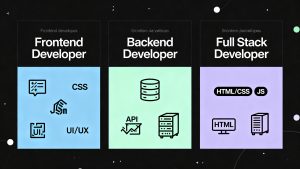The backend developer job market in 2025 is undergoing rapid transformation, shaped by dramatic shifts in technology, business strategy, and skill requirements. Today’s backend professionals must navigate cloud adoption, microservices, security challenges, and AI-powered automation to remain competitive.
Rising Demand for Cloud Skills
Nearly three-quarters of backend engineering roles in 2025 now require proficiency in cloud technologies such as AWS, Azure, and Google Cloud. This specialization helps businesses scale seamlessly and maintain agility during digital transformation. Mastery of cloud services directly increases candidate marketability, with companies prioritizing cloud expertise for most backend hires.
Microservices and Containerization: The New Standard
Microservices architecture has become mainstream, with most organizations seeking developers who understand how to split monolithic systems into scalable, independent units. Job postings increasingly specify skills in Docker, Kubernetes, and orchestration frameworks, supporting agile delivery and robust system management. Familiarity with microservices is often a key differentiator for backend candidates.
API Design and Integration Skills
Effective API design is essential for building interoperable, scalable platforms. RESTful and GraphQL interfaces are featured in over 60% of backend job listings, highlighting the importance of well-structured, secure, and maintainable APIs. Developers able to master API protocols are better positioned for both enterprise and startup opportunities.
Growing Emphasis on Security and Compliance
Security expertise has advanced as cybersecurity threats rise. Companies are seeking backend specialists skilled in secure coding practices and familiar with modern tools like OAuth, JWT, and OWASP standards. Zero-trust models, compliance frameworks (GDPR, PCI DSS), and automated threat detection are now core requirements, especially in finance, healthcare, and cloud professions.
Data Management: NoSQL and Cloud Databases
Backend systems in 2025 increasingly employ NoSQL solutions like MongoDB, Cassandra, and Redis to handle diverse, unstructured data types. Cloud-native databases are equally vital for high-performance, distributed applications. Job descriptions typically mention both relational and NoSQL skills as prerequisites.
The Rise of AI and Automation
AI-powered tools and automation are revolutionizing backend workflows. Employers value candidates who can implement machine learning models, integrate with AI APIs, and utilize automation platforms such as Jenkins or GitHub Actions. Knowledge of frameworks like TensorFlow and PyTorch is becoming increasingly relevant, broadening career possibilities for backend engineers.
Continuous Integration and Deployment
Continuous integration/continuous deployment (CI/CD) is now fundamental to backend operations. Back-end developers must master CI/CD tools and pipelines—Jenkins, GitLab, GitHub Actions, Terraform—to improve release speed and system reliability. These practices accelerate agile development and reduce deployment failures.
Soft Skills and Remote Collaboration
With the majority of backend roles offering flexible or remote work arrangements, communication and teamwork have become essential. Companies strongly favor developers who can collaborate across distributed teams, articulate technical concepts to non-technical stakeholders, and foster a positive development culture. Increasingly, job success depends on the ability to work effectively in remote-first environments.
Evolving Salary Trends and Market Opportunities
Backend engineering remains a lucrative and resilient career path in 2025. Experienced backend developers earn competitive salaries, especially those with advanced cloud, AI, and security credentials. Outsourcing hotspots offer lower salary bands but high role accessibility, while enterprises continue to prioritize backend expertise for mission-critical systems. Continued professional development—via bootcamps, certifications, and open-source contributions—can boost employability and market value.
Read more such articles from our Newsletter here.



